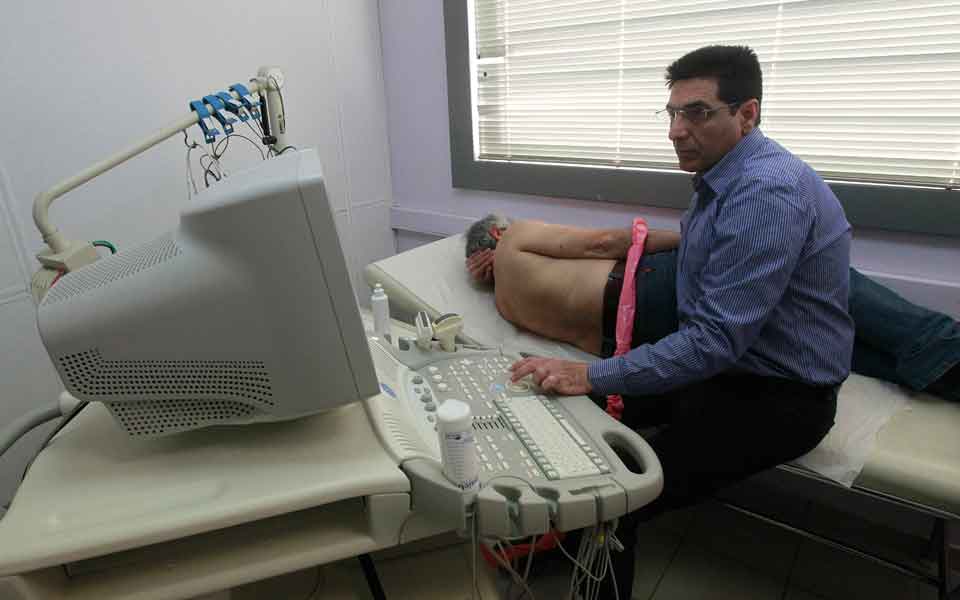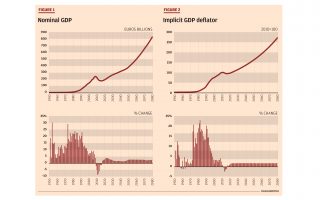No respite in sight for middle classes despite bailout exit

The period of austerity is by no means over for the Greek middle classes, despite the country’s exit from the memorandum this summer.
As negotiations with the European institutions on the measures that will be included in the 2019 budget enter the final stretch, it has already become clear that middle-income Greeks have absolutely nothing to look forward to in the next year, while the mood remains heavy for 2020 too.
A reduction to the Single Property Tax (ENFIA) does not concern the medium- and large-property owners, salaried workers’ deductions for taxes and social security contributions will remain exactly the same in 2019, and despite the expected reduction of the rates used to calculate the contributions of self-employed professionals, their total deductions will remain above 50 percent next year as well.
Middle-income Greeks could have looked forward to a reduction of their tax obligations in 2020, as the package of that year’s measures to ease the impact of austerity would have included a reduction of the main tax rate to 20 percent and the waiving of the solidarity levy for annual incomes up to 30,000 euros. However, the government wants to cancel these tax easing measures in order to be able to keep the tax-free ceiling at the current level.
A small perk for the middle classes could come from the reduction of the ENFIA tax in 2020, which according to the original plan would have been extended to property owners with assets in excess of 150,000-200,000 euros. After the latest announcement from the government concerning 10,000 new hirings in the state sector, though, it remains to be seen which tax easing measures will be scrapped in order to secure the additional 200 million euros (or more) that will be needed to cover the additional fiscal costs.
The package of measures the government plans to implement in 2019 and 2020 – even if approved in its entirety by the country’s creditors – does not answer one of the most important issues for the Greek middle classes: particularly high non-wage labor costs.
Right now, for a salaried worker to take home 15,000 euros per year his or her employer would have to pay out 25,200 euros. For a net income of 20,000 euros, the cost to the employer grows to 35,885 euros, while when it comes to a net income of more than 30,000 euros, the state collects more from the employer than what the employee receives.
This situation is not about to change in 2019 or in 2020. Had the government followed the prescribed policy of measures and countermeasures, the tax-free ceiling would have come down in 2020, but there would have also been a reduction to the basic tax rates and the solidarity levy. It is estimated that the recipients of more than 20,000 euros net every year would have secured a tax reduction between 80 and 700 euros per year despite the reduction to the tax-free ceiling.
None of this is going to happen once the tax easing measures are frozen so as to finance the maintenance of the tax-free ceiling at its current level.
Significant expectations, meanwhile, have been cultivated among self-employed professionals and freelancers over the upcoming reductions to the rates for the calculation of their social security contributions. In practical terms, however, the benefits will be well below expectations because the rate reduction is about to coincide with the way contributions are calculated.
Therefore, the actual easing of the annual social security burden compared to what professionals are paying in 2018 will be limited to just a few hundred euros, while the total rate of deductions toward taxes and social security contributions will remain above 50 percent.
This means that a self-employed or freelance professional declaring an income of 30,000 euros per year (before tax) will save 871 euros from the reduction of the social security contributions, but the total amount payable in taxes and contributions will remain at 16,600 euros per year. As a result, his or her net profits will shrink to 13,401 euros, or just 45 percent of earnings before tax.
Mid-sized property owners will also carry the lion’s share of the property tax burden in 2019 as the total tax paid by the owners of properties worth 150,000-200,000 euros or more will become even greater next year.
Today owners of assets worth over 200,000 euros – some 750,000 people from a total of 6.4 million owners – pay some 49 percent of the total ENFIA dues, or about 1.3 billion euros.
Their share will grow to 54 percent next year as the same owners will continue to pay 1.3 billion or possibly even more – depending on the new adjustment of taxable property rates – while the total amount projected for collection will be reduced to 2.4 billion euros.
The entire sum of the ENFIA reduction, amounting to 265 million euros, will be directed at owners of properties up to 150,000 euros and will effectively mean discounts of 30 to 80 euros per year, but they will concern a high number of owners.
For 2020 the government has said that it will use an additional 400 million euros from the budget surplus to introduce further reductions that will affect larger properties too. Even then the reduction rate will be quite limited at around 5-10 percent for properties worth over 200,000 euros.





